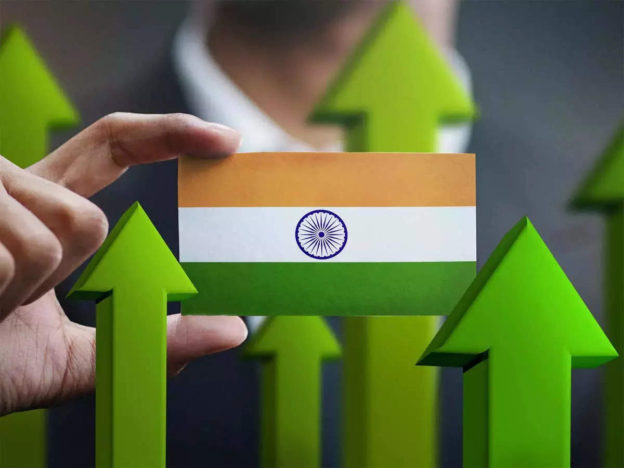With several notable recent economic reforms, India is one of the fastest-growing emerging economies. The country aspires to become a $5 trillion economy by 2024-25 and a $10 trillion one by 2030. There is ample evidence that India’s growth has been highly unequal in the past. Therefore, transforming this vision of growth into reality will require a comprehensive approach based on a multitude of policies targeting multiple domains. Further, the development trajectory should also be capable of tackling the key environmental challenges that India faces.
In the fast-changing policy landscape of a country as diverse as India, striving for equitable growth will not be possible without gauging regional implications of policy shifts. Equally important will be to understand the direction and distributive impacts of ongoing policies consistently and on a regular basis in conjunction with various decarbonisation goals recently endorsed by India.
A book released in December 2021, Economy-Wide Assessment of Regional Policies in India, takes on these questions. Making use of the outputs from the integrated energy-economy regional model called E3-India, it provides hopeful insight and offers powerful recommendations for India’s energy, economic and environmental policymaking at the national and state levels.
The book (edited by the lead author of this post) is a compilation of articles describing how various ongoing and announced sector-specific policies will, or will not, advance India’s social, economic and climate ambitions in both the near and longer terms nationally and across different states. The focus is largely on recent policies implemented in the primary, secondary and services sectors, including agriculture, capital goods, automobiles, electronics, information technology (IT-ITeS) and energy. The analyses also account for the effects of the COVID-19 pandemic and evaluate the impacts of different policy choices — especially with respect to environmental consequences and energy use — at the national and subnational levels.
The book takes a realistic look at the economic sensitivities and interdependencies at the national and state levels across India. Its aim is to broaden the scope of future action by reducing ambiguity and uncertainty in achieving the key policy targets — that is, by giving policymakers greater confidence that desired outcomes can be achieved. The major policies evaluated against a business-as-usual scenario include: the Agriculture Export Policy 2018; National Capital Goods Policy 2016; National Steel Policy 2017; Electrical Equipment Mission Plan 2012-2022; National Policy on Electronics 2019; Digital India initiative; National Software Policy 2019; Automotive Mission Plan 2026; and several subnational initiatives in a variety of sectors. In addition, the book evaluates regional impacts of national energy targets, along with economic impacts of existing Nationally Determined Contributions for India and economic impacts of Delhi’s airshed management. The book also takes a closer look at impacts of liquidity infusion in the context of COVID-19 through the Atmanirbhar package.
Sector-specific impact analyses of national policies reveal critical regional insights. For instance, the existing policy regime will lead to Gujarat state becoming a leader in international agricultural exports. Maharashtra, Karnataka and Haryana perform exceptionally well in the capital goods sector. With appropriate incentives in place, Haryana also emerges as a leader under the Automotive Mission Plan 2026 along with Tamil Nadu.
Tamil Nadu exhibits diversified leadership by outperforming in the electronics and IT-ITeS sphere along with Delhi and Uttar Pradesh. The state emerges as a front-runner in renewable capacity installation as well, along with Maharashtra, Karnataka and Andhra Pradesh. In contrast, the resource-rich and income-poor states like Chhattisgarh, Odisha and Jharkhand show a greater growth potential only in the capital goods sector.
We find that the more advanced states, like Maharashtra and Tamil Nadu, are already in a position to take up diversified policy action in the short run and direct resources to expand their markets through further integration in the global value chains. Most other Indian states still rely on few specialised sectors and will be able to diversify in the medium to long run only if sustained policy support in terms of investment in both infrastructure and capacity-building is provided. In a country as large as India, with different states endowed with distinct economic and geographic characteristics, formulating policies to strengthen regional value chains is critical for equitable growth of states across all regions.
Regional analysis of sector-specific policies highlights the nuances of regional variations in a particular sector, but in reality, various sectors are highly interconnected. The implementation of a policy in one region therefore has direct and immediate effects in its implementation in other regions and sectors. An integrated analysis that captures the essence of multiple policies simultaneously working together in diversified sectors and development areas is demonstrated in the final synthesis of this book. The comprehensiveness and granularity of the modelling outputs will enable readers (and other researchers, who can download and use the E3-India model free of charge) to derive nuanced and more informed policy insights.
By clearly outlining the short-run as well as the medium- and long-run priority sectors at a regional level in conjunction with impacts of ongoing energy transitions, this book intends to serve as a comprehensive guide for evidence-based economic and energy policymaking in India. Shaping these regional insights into deliverable policy actions ultimately lies in the hands of the policymakers. The book and the E3-India model serve as a primer and a tool to facilitate evidence-based policymaking at the regional level, enabling policymakers to leverage and strengthen India’s unique socioeconomic and geographical diversity, while moving toward national economic growth targets equitably and with a lower carbon footprint.





